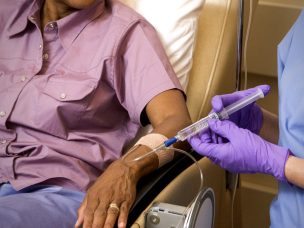Although the development of anti-HER2 treatments has come a long way, the likelihood of acquired resistance remains high. According to a study published in Therapeutic Advances in Medical Oncology, new treatment options and combinations can help to improve the ultimate outcome of a patient’s cancer treatment, as well as to de-escelate their treatment and reduce resistance to other treatment modalities.
Sara M. Tolaney, M.D., M.P.H., and Sonia Pernas, M.D., Ph.D., both from the Dana-Farber Cancer Institute, discuss findings related to a variety of treatment options for HER2-positive cancer, with special attention paid to understanding how to inhibit resistance. They first discuss the current known resistance mechanisms and response heterogeneity as it applies to anti-HER2 therapies.
Response heterogeneity is discussed in the context of numerous and treatment options, and types of heterogeneity are discussed in turn. This includes blockades of the HER2 receptors, which leads to activating other mechanisms within and outside of the HER family, including HER3, RTKs, and IGF-1R. Responses can also cause many other types of alterations, such as PIK3CA mutations.
Several anti-HER ADC medications are discussed, with attention paid to a comparison between older and newer treatment options. It is noted that DS-8201a and SYD985 treatments are promising for certain phases in those with both HER2-positive and HER2 low-expressing tumors. These drugs are specifically utilized as second-line or third-line treatments following T-DM1.
Novel HER-directed TKIs neratinib, tucatinib, pyrotinib, and poziotinib are noted as each having a varying degree of success in clinical trials so far. Tucatinib is specifically shown to have non-toxic reactions with T-DM1.
Lastly, immunotherapeutic approaches, CDK4/6 inhibitors, and PI3K/Akt/mTOR are discussed, with a summary of multiple trials and description of specific responses to treatments taken concurrently with T-DM1 therapy.
The authors conclude that combining targeted anti-HER therapies is especially promising when it comes to targeting response heterogeneity, as the mechanisms of action and blockade differ greatly among these therapies. They close with a discussion of the way that potential biomarkers can impact optimized therapeutic strategies for HER2-positive patients.
Source:










